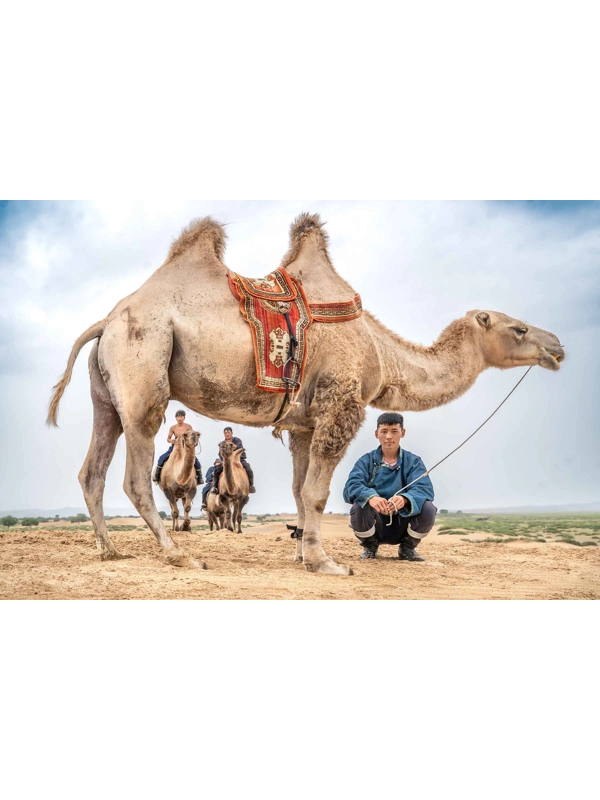Group of camel herders (Mongolia).
In the vast steppes and arid desert regions of Mongolia, camel herding is a traditional way of life for many nomadic families. Mongolia is home to over 250,000 Bactrian camels, a two-humped species well adapted to the extreme temperatures of the Gobi Desert. These camels play a crucial role in the livelihoods of herders, serving not only as a primary means of transportation but also as a valuable source of wool, milk, and meat.
The camel’s thick wool coat provides insulation during the harsh Mongolian winters and is naturally shed in the warmer summer months. This wool is highly prized for its warmth, durability, and softness. An adult male camel can produce up to 18 kilograms of wool annually, which herders collect and often sell or use to make traditional clothing and blankets.
For camel herders, camels are more than livestock, they are an integral part of nomadic culture and survival. In regions where roads are scarce and terrain is difficult, camels remain one of the only reliable forms of transport, capable of carrying heavy loads across long distances. Camel caravans are still a common sight in parts of the Gobi, especially during seasonal migrations.
Herding practices are typically passed down through generations, with families working together to care for their animals. Despite modern changes in Mongolia’s economy and society, camel herding continues to be an important cultural tradition and a symbol of resilience and adaptation in one of the world’s most challenging environments.
Date & signature on back
Prints are shipped rolled in a dent-resistant tube
Worldwide shipping. Final cost calculated at checkout after entering the delivery address.
For sizes different from those available in the gallery please send your request to roberto_pazzi@hotmail.com




